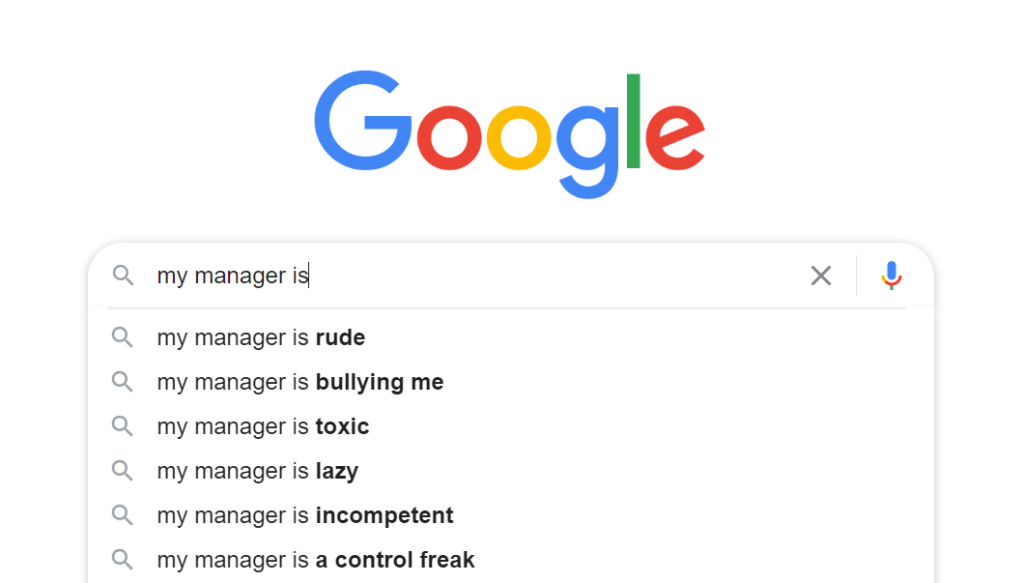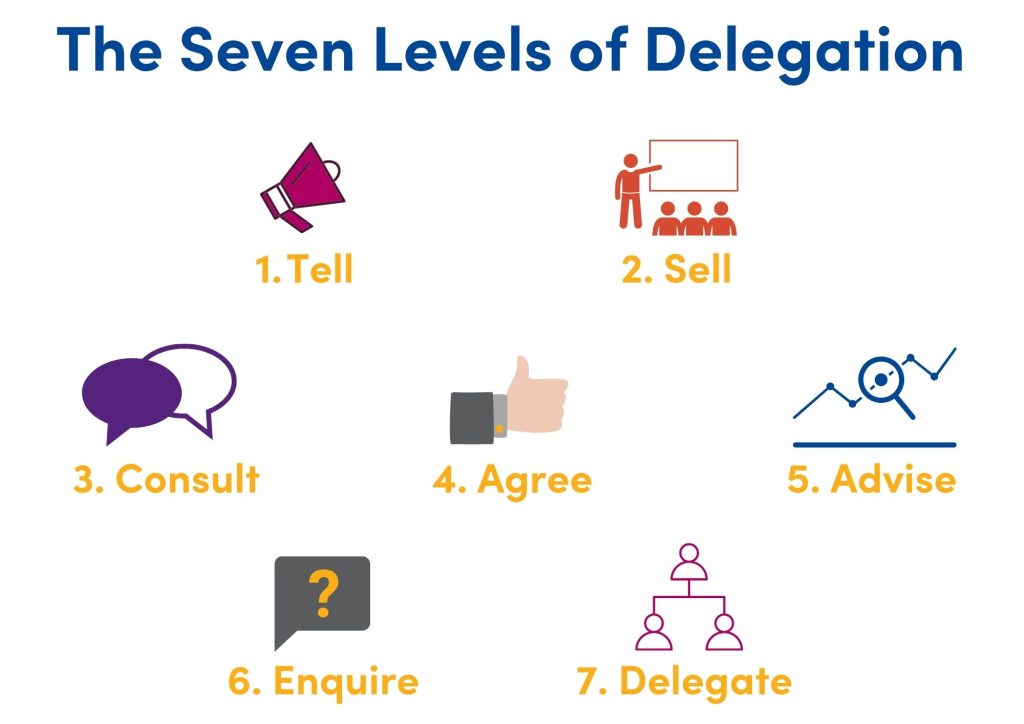By Raj Babber, Director of Programmes & Apprenticeship Learning
Scarily, the title for this article came from a simple Google search! If you type in ‘my manager is’, those are the top suggested search terms.

Being a manager is hard; it’s a balancing act between doing the best by your people, and doing the best by your business. With that in mind, I find it shocking that there is an estimated 2.4 million untrained ‘accidental managers’ in the UK. [Source]
Good management is a real skill, yet we’re expecting our people to succeed without the appropriate training. We would never expect an untrained, rookie sales person to hit the same figures as a sales veteran, but that’s exactly what we expect our managers to do. We expect them to manage their people just as well as those who have years of experience in people management. The real problem is that when managers get it wrong, there are people on the other end of their decisions who directly suffer the consequences.
Research has shown that the way a line manager views their performance differs greatly to how employees rate their bosses. On average, line managers rated themselves as 7.8/10 while employees rated their bosses as an average of 4.7/10 [Source]. This is also typical of the views Managers have when beginning on our development programmes – after working with myself and others at Discovery, they often understand they are not currently at this level, but we build a plan to help them develop and achieve this level.
Without recognising this huge disparity of opinion between managers and their reports, it can have a severe impact on the morale and engagement of your employees. According to the CIPD, almost two-fifths of UK businesses have seen an increase in stress-related absences over the past year, with the most cited cause being management or management style. [Source]
The effects of poor management are impacting upon businesses every day. Gallup has found that 70% of the variance in team-level engagement is based on the manager. This is attributed to three factors:
- Employee perceptions of the manager
- The manager’s level of engagement
- The manager’s talents
[Source]
Worryingly, the perceptions of employees about their bosses isn’t wholly positive:
- 91% of employees said their leaders lacked good communication skills (which manifested in ways such as not recognising employee achievements, not giving clear directions, taking credit for others’ ideas and not offering constructive criticism) [Source]
- 2 in 3 workers perceive their boss as annoying [Source]
- 41 percent of the UK workforce said they “hadn’t gone into work because of a terrible boss” [Source]
- 21% of employees have resigned because of negative management experiences [Source]
On top of this, research from Glassdoor found the most common ‘bad boss’ traits are:
- 43% said their boss is disrespectful
- 34% said their boss has a negative attitude
- 23% said their boss is lazy [Source]
The key to good management is ensuring your managers are self-aware, emotionally intelligent and have the toolkit to support their team. I’ve seen it time and time again where managers only manage in one ‘style’ – they don’t change based on the experience of employees, the ease/difficulty of the task or context of the situation.
A really useful tool to help managers understand the importance of using different management styles is Tannenbaum and Schmidt’s ‘Seven Levels of Delegation’. This framework covers the different ways to manage a person or team – on one end of the spectrum is what some people call ‘autocratic’ management, and on the other end is what some people call ‘macro-management’. In truth, these two extremes have their place at the table and are appropriate in some situations, but most of the time, and for most employees, the most appropriate day-to-day styles will sit in the middle.
So, what are the seven levels of delegation?

1. Tell
This is the style that can often be deemed as ‘autocratic’. The manager will take the information, make a decision and tell the employee what to do.
Whilst this can seem a strong style, it definitely does have its place. Take, for instance, some of the decisions that have needed to be made during the pandemic. When the situation is completely new or unexpected, the decision has to be made quickly and there is an element of health & safety, this direct style is important to ensure the right decision is made and the action taken quickly to keep everyone safe.
2. Sell
In this situation, the employee begins to bring their opinion to the table. They will bring the information and a range of possible solutions to their manager, including the advantages and disadvantages. The manager will then decide what to do.
This style works for employees who are new to the working world, your business, the role or even just a specific task. While they are learning, this provides the opportunity for them to branch out and start thinking for themselves, while still having their thought-process sense checked. Sometimes people do things with the best intentions, but what they do isn’t quite right. This style ensures managers are able to make the right decisions, whilst also understanding the knowledge and thought-process of their employees.
3. Consult
The next style gives employees a little bit more of a say. This involves an employee giving their opinion on what they think the course of action should be, which the manager will then consider and decide if the employee should proceed.
This level allows an employee to plan up to the point of taking action, but still allows the manager to sense check what they are about to do. The overall decision still lies with the manager, but the employee is being encouraged to internally weigh up the pros and cons of different solutions, and pick the one they feel is right. There is an element of self-sufficiency and accountability for the employee, but the manager is still there as a safety blanket to stop anything detrimental from happening.
4. Agree
We’re now at the half-way point of the styles, and this is where the power of decision making begins to shift. At this point, the decision is made by the employee and their manager together. Some would call this ‘collaborative’ management.
The employee and their manager will discuss the problem, potential actions and come up with a solution together. The decision on whether to proceed or not will be a mutual decision, and the employee will be able to contribute their opinion throughout the discussion. After this point, the employee will go away and action the agreed plan, and will not need to refer back to their manager.
5. Advise
At this point, the decision making begins to sit more with the employee than their manager. The employee will come up with an idea, keep their manager informed of their plan, and then proceed to action the plan.
With this style, the manager doesn’t ‘give the go ahead’ as such – they will act as a sound counsel, give advice and possibly highlight unexpected outcomes, but the decision to proceed lies with the employee.
6. Enquire
This style gives the employee ownership over the decision and the actions they take, but the manager does follow up afterwards to understand what they did and why.
This places full ownership on the employee for the result, but the manager takes the time to understand why they made the decisions they did, and could provide insights or advice for future decisions.
7. Delegate
The final stage sees the manager take a complete step back from the task in hand. The employee is entirely responsible for the decision and outcome, so much so, the manager doesn’t even know what they have decided to do. This can be referred to as ‘macro-management’.
This style can have mixed outcomes for employees. On the one hand, they feel empowered to make decisions and take full ownership for tasks. On the other hand, in some circumstances, this can make employees feel unsupported, out of their depth and as though their manager doesn’t care.
Each of these styles can be perceived positively and negatively – it all depends on the employee, their experience and the context of the situation. This reinforces the importance of why managers must be able to make an informed decision about which style to use and when. A manager must recognise that how they manage could change as frequently as between different tasks for the same employee. To decide which is the right style to adopt, managers must have self-awareness, emotional intelligence and an understanding of their team members.
As we move through the fallout of Covid-19, the success of businesses will rely on managers being able to get the best results, highest productivity and full engagement from their people. By understanding how to use management tools and techniques, not only will your managers become better managers, but they will start their journey towards becoming leaders.
To find out more about how our training programmes can develop your managers into effective leaders, please visit our website or get in touch with me.













